Replying to reviews in iOS 10.3 and more…
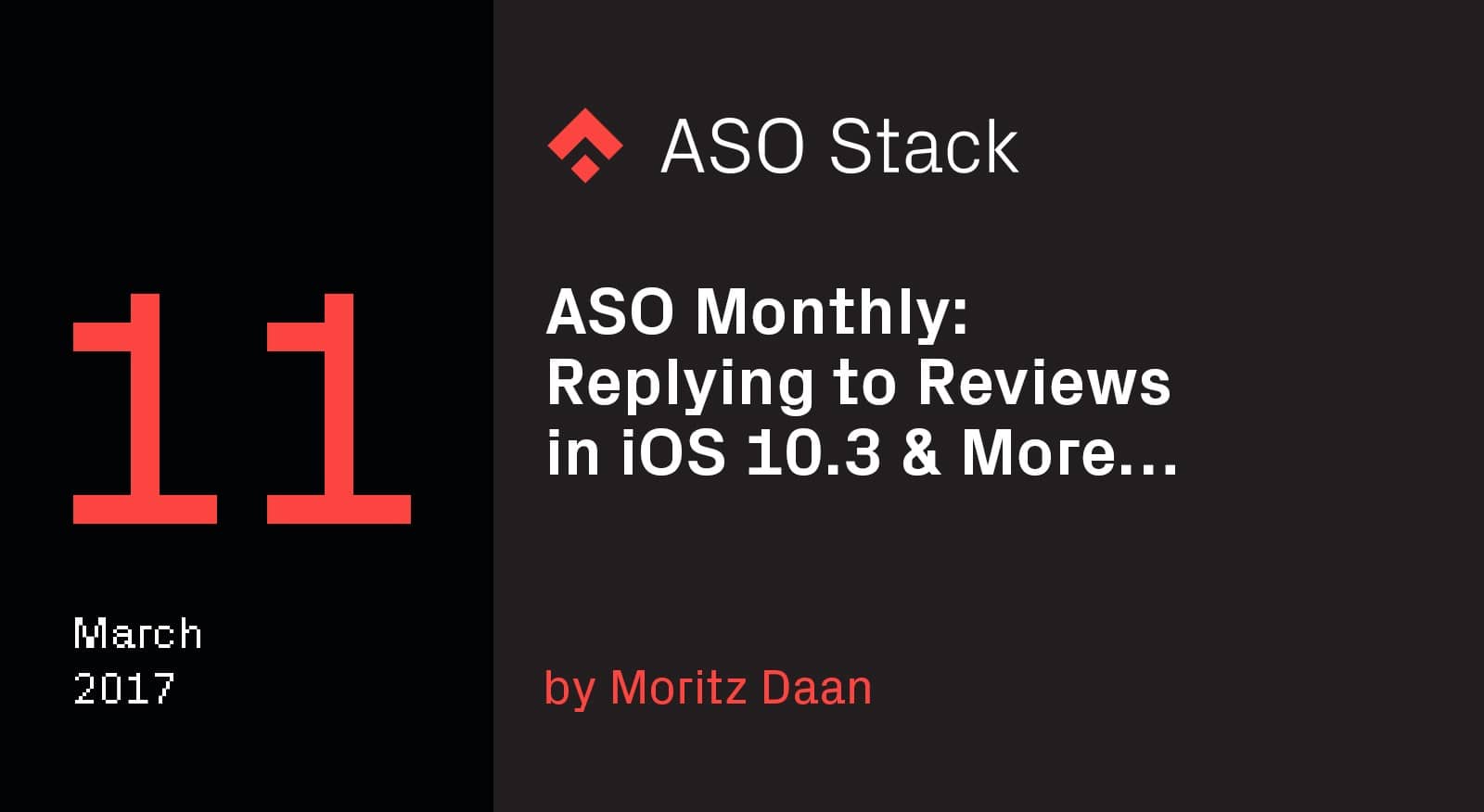
In the ASO Monthly-series we want to reflect on the previous month, to shed a light on trends in app store optimization, algorithm changes, insights in conversion rate optimization and tool updates.
App Store Optimization News from March 2017
March 9 and 10
As 9to5mac reported, developers and ASOs were panicking, as suddenly Apple seemed to require changes in What’s New-texts & Descriptions to be reviewed. The change in policy got reverted only one day later, potentially because of app developer backlash or app review requests piling up.
Whilst everything is back to normal now, it could be seen as another signal that the App Store search algorithm will finally start looking at the description field too. We already hinted at this with the 50 character name change, and with the launch of Search Ads it became clear that Apple is already indexing the description field to define relevancy for targeted search terms.
March 13
ASO Tool Mobile Action launches app update timeline. A nice addition that was already available in SensorTower’s Enterprise tool, and partially also in AppFollow.
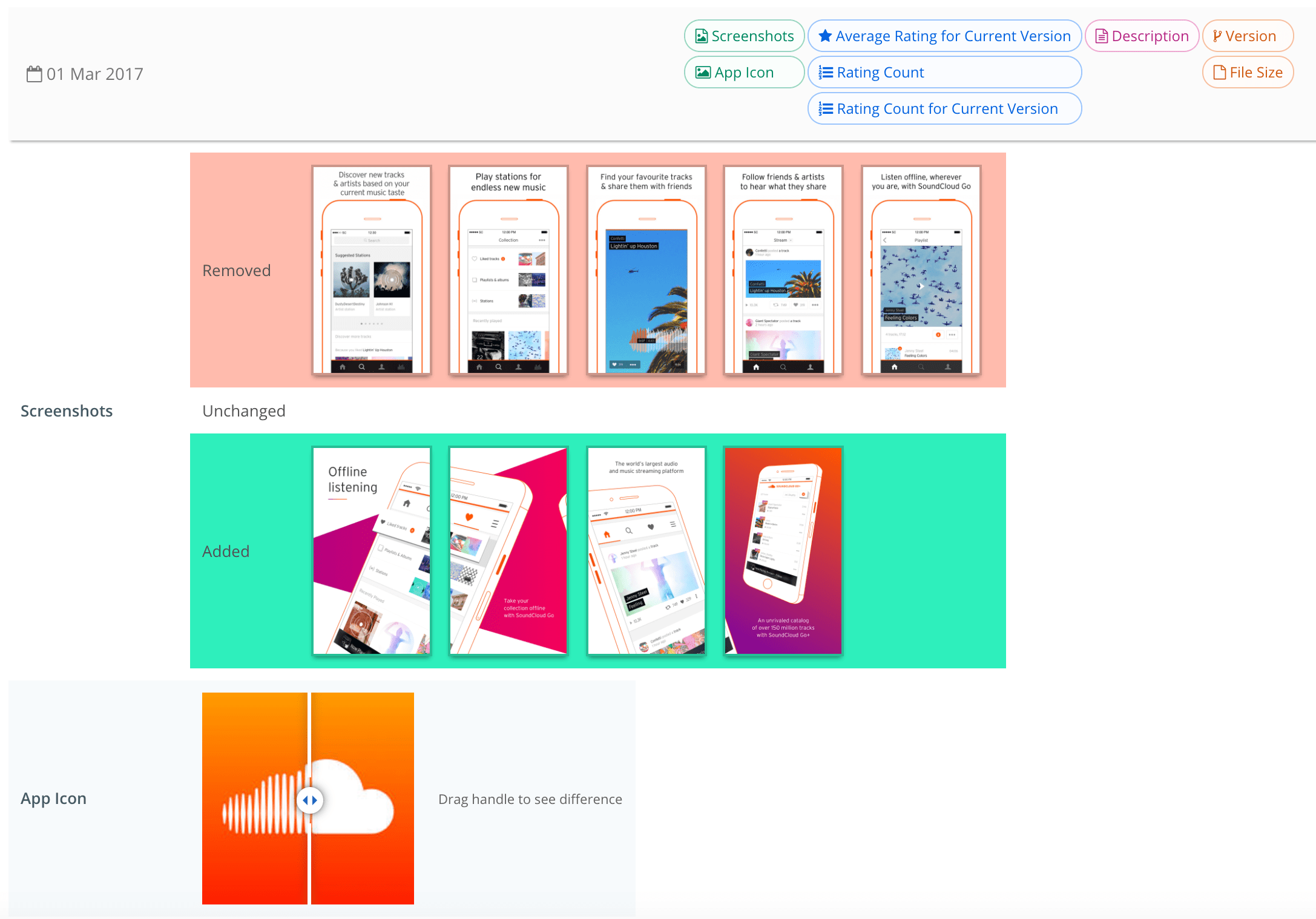
As you see in the update timeline SoundCloud has changed their screenshots to a really slick looking set of 4 screenshots.
March 15
Keeping your app up-to-date on the App Store just got a little bit more important, as Apple now started showing apps that haven’t been updated recently:
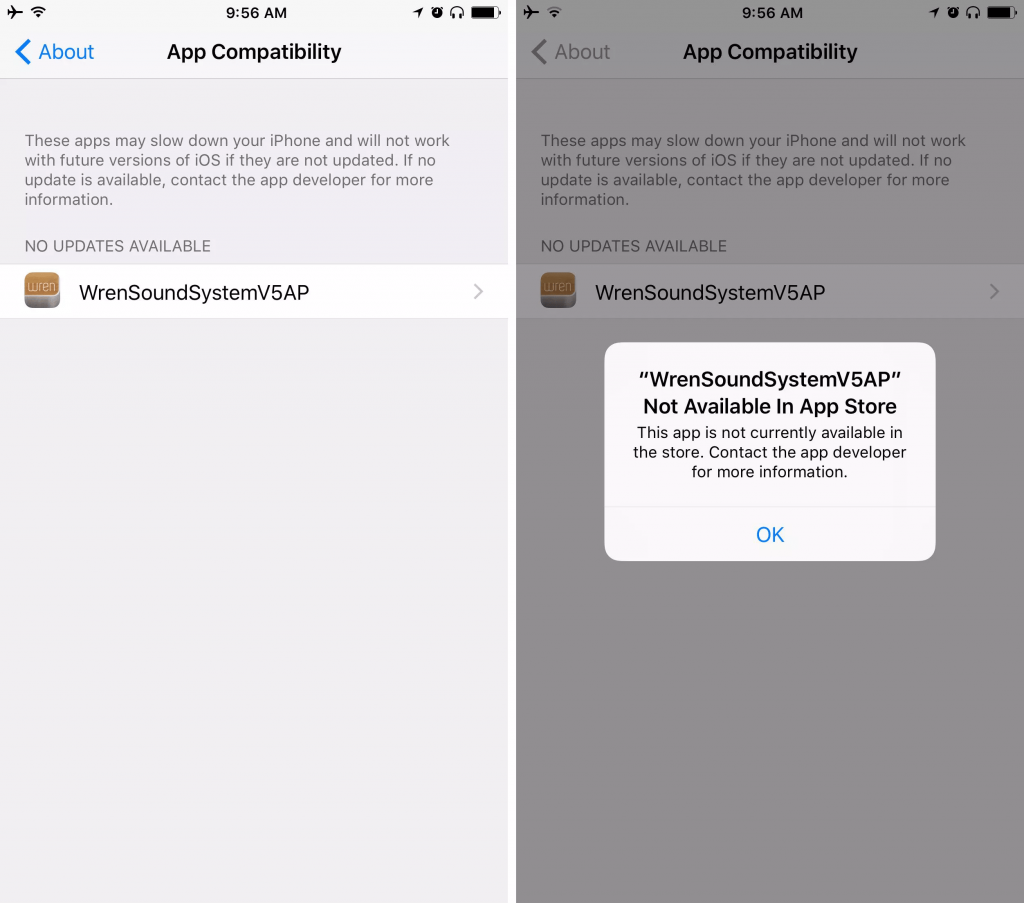
iOS 10.3 shows apps that have not been updated recently.
March 16
SensorTower reports that the number of iMessage Enabled apps has been growing to nearly 5.000, but the graph clearly shows that growth has been slowing lately:
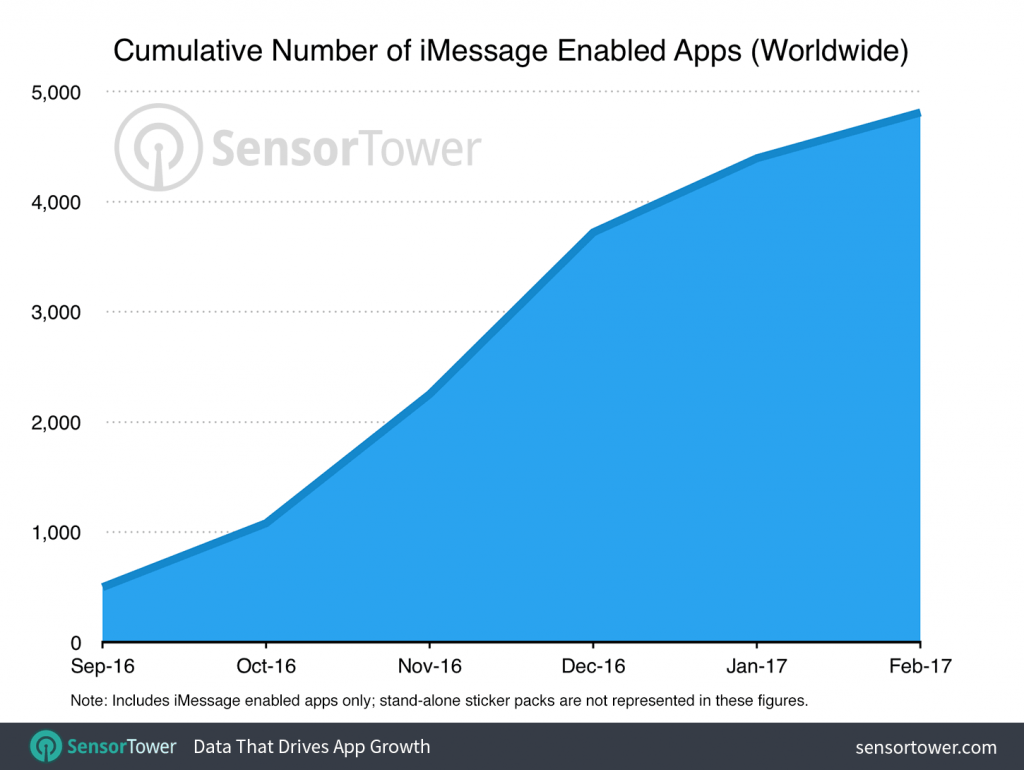
March 17: Sergey Sharov from ASOdesk.com announces their new Keyword Explorer tool.
March 22
Gabe Kwakyi from Incipia reports a hiccup in iTunes Connect analytics that shows retention numbers of 300%. The situation is back to normal now. Whilst this isn’t directly tied to ASO directly, it does reinforce that you should be cautious also when looking at iTunes Connect ASO metrics too such as “Impressions”, “Product Page Views” and “App Units”.
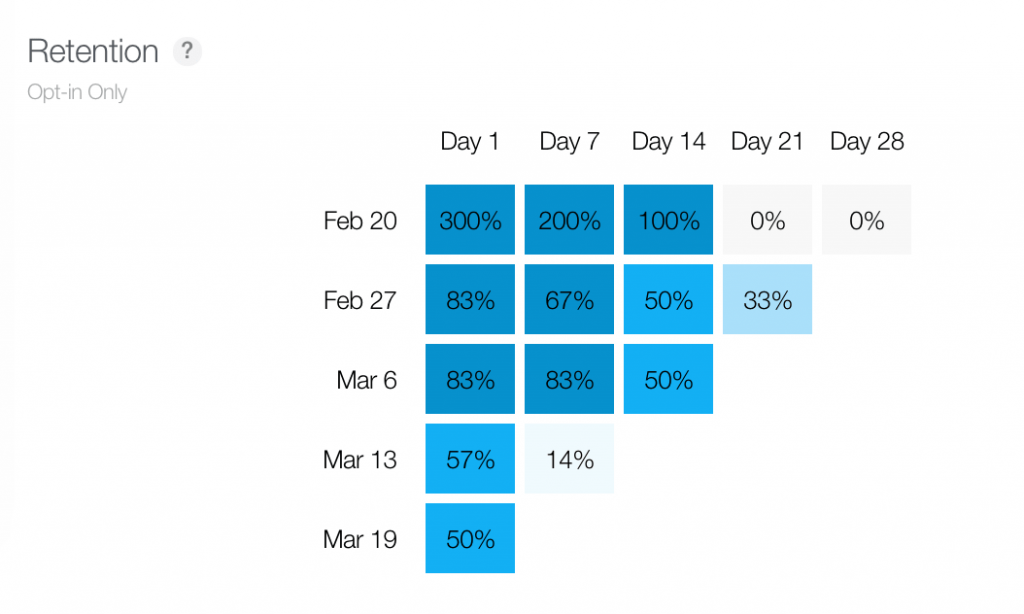
“Retention everywhere” in iTunes Connect Analytics
March 24
John Koetsier from Tune published a report, showing that the top 10 keywords in terms of volume are all branded. This goes down to 58.4% in the top 500.
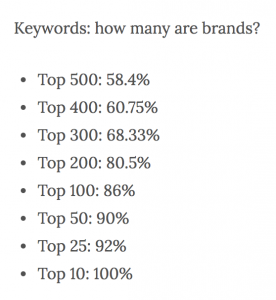 It’s not too shocking if you consider Google’s statement which we reported in November on, saying that “[n]early half of the queries are broad searches” (as opposed to brand searches).
It’s not too shocking if you consider Google’s statement which we reported in November on, saying that “[n]early half of the queries are broad searches” (as opposed to brand searches).
The top generic keywords in terms of volume were:
#18 games
#24 vpn
#26 free games
#43 photo editor
#66 music
#71 calculator
#95 weather
Today, also AppTweak announces the addition of Polish and Indonesian dictionaries for their ASO tool.
March 25
MobileAction published a blog post suggesting that only having a keyword in your short description is better than having the keyword in both the short & long descriptions. Whilst they point out that their sample size wasn’t statistically significant, the result will still leave us puzzled for a while:
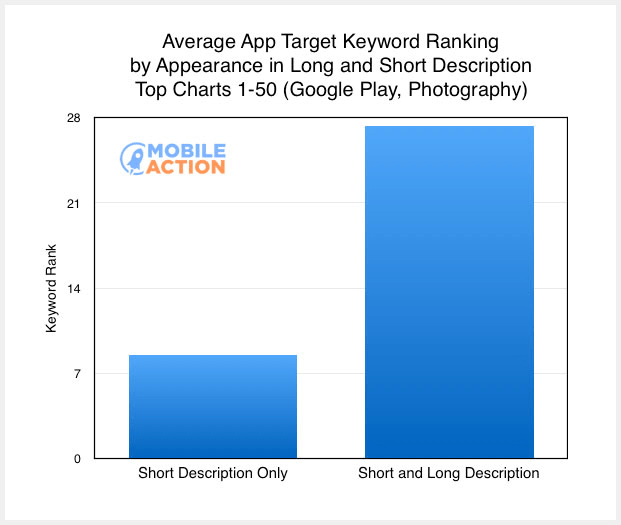
March 27
iOS 10.3 Release
Back in January we already wrote about that iOS 10.3 would introduce a more user friendly rating prompt, in which the user would not have to leave the app at all. Whilst it’s still early days, we believe that the new iOS rating prompts in 10.3, will dramatically increase the volume and importance of reviews.
Another new thing was the possibility to reply to reviews. What we didn’t know back then, was how this would work. We now know that you can reply straight from the Activity tab, that replies can contain up to 6000 characters and that they have to be reviewed too:
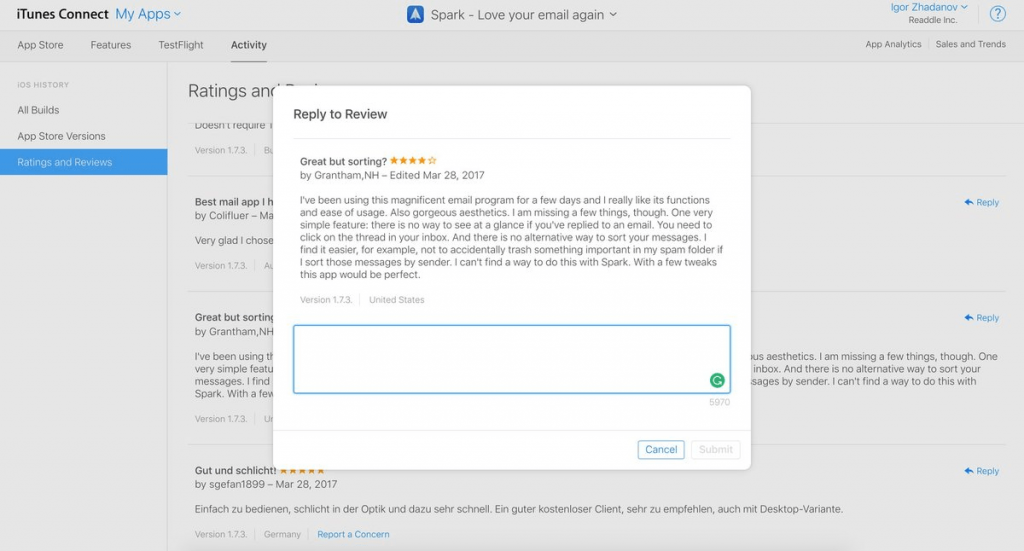
You can reply up to 6.000 characters. ThomasBCN: “PlayStore are capped to 350, which sometimes falls short to detail explanations to users”
We also know how the developer responses show up for the user:
![]()
Dynamic icons
With the announcement of iOS 10.3, developers hoped that they were able to change the app icon dynamically in the background. Next to use cases such as displaying the day & time (see screenshot) it would’ve been ideal for App Store Optimization to A/B test new icons on the home screen, which could’ve then been a great indicator for the impact in the app store as well.
![]()
Apple’s calendar & clock have the ability to change the icon dynamically without the user’s permission.
As it stands right now, the app however needs to be in the foreground to change the icon, and you actually need to show an alert to the user that the icon has changed.
![]()
A perfect use case: setting your app icon to your favorite team in a sports app.
Pushwoosh was quick to jump on the opportunity to allow you to send a push notification to the user which deeplinks into changing the icon (via ThomasBCN). Technically you could thus still run an A/B test on engagement of a specific icon.
Now that we’re talking about dynamic icons, Google didn’t sit still either and just announced Adaptive Icons with the coming of Android O.
March 28
The App Store started rejecting apps that use “free” or any price reference in the title.
March 29
AppFollow makes their ASO Tools are free for every AppFollow user:
And that was it in ASO news for March 2017, but before you go, don’t forget to check this out:
Two excellent long-form ASO posts have been published that I would suggest reading:
Laurie Galazzo in Sylvain Gauchet’s Apptamin blog:
How to choose App Store Keywords and App Name for ASO (App Store Optimization)
Your app is live and available on the App Store. It is unique and looks great. You really believe in your app’s added…
www.apptamin.com
Guillermo Gallardo in Daniel Peris’ The Tool blog:
16 App Store Optimization (ASO) Mistakes You Should Avoid
In this post we talk about some ASO mistakes app developers and marketers should avoid if they want to improve their…
thetool.io
If you’re into ASO, it would be great to connect at the Applause.io conference in Barcelona, Saturday May 27, 2017
And if you like the ASO Monthly series, please click the 💚 button below. Also make sure to follow the ASO Monthly-series or sign up to the left so that you’re the first to hear when the next edition comes out.
Let’s discuss in the comments, and like always: if you have noticed anything related to ASO, please let me know on Twitter or reach out to [email protected].
Other ASO Monthly editions:
- May 2016: App Store broken + 5 localized store listing experiments…
- June 2016: Announcement search ads…
- July 2016: Google Play Store testing with 2nd ad…
- August 2016: Simplified screenshot submission… (by Peter)
- September 2016: 50 character title-rule… (by Gabe)
- October 2016: Apple launches Search Ads… (by Maximilian)
- November 2016: Google Play adds conversion rate benchmarks…
- December 2016: Priori Data launches Keyword Tool …
- January 2017: In-App ratings in iOS 10.3 and more
- February 2017: Play Store starts using retention for keyword rankings













